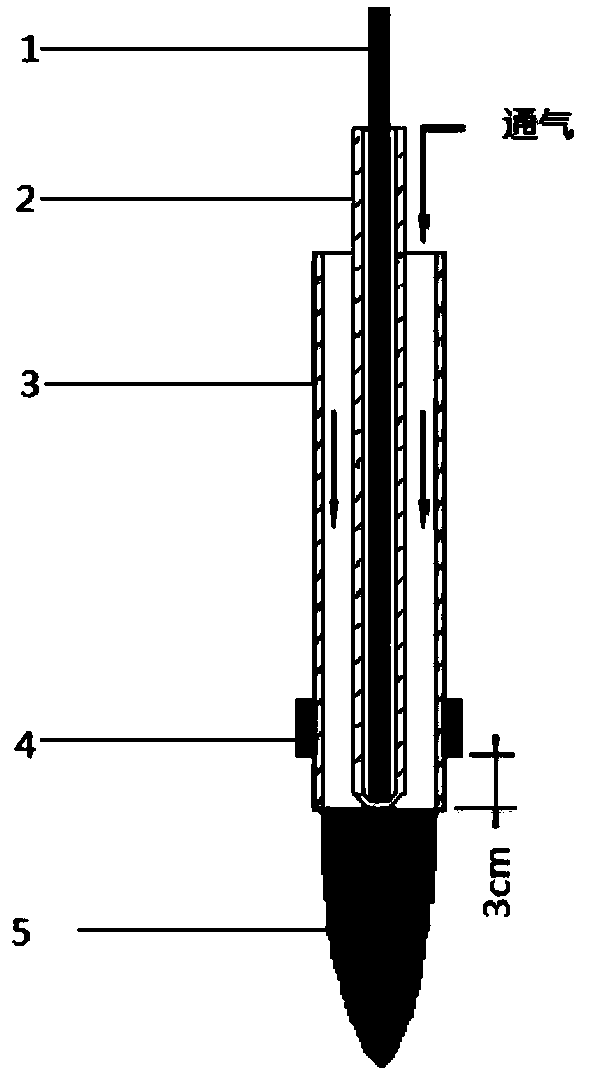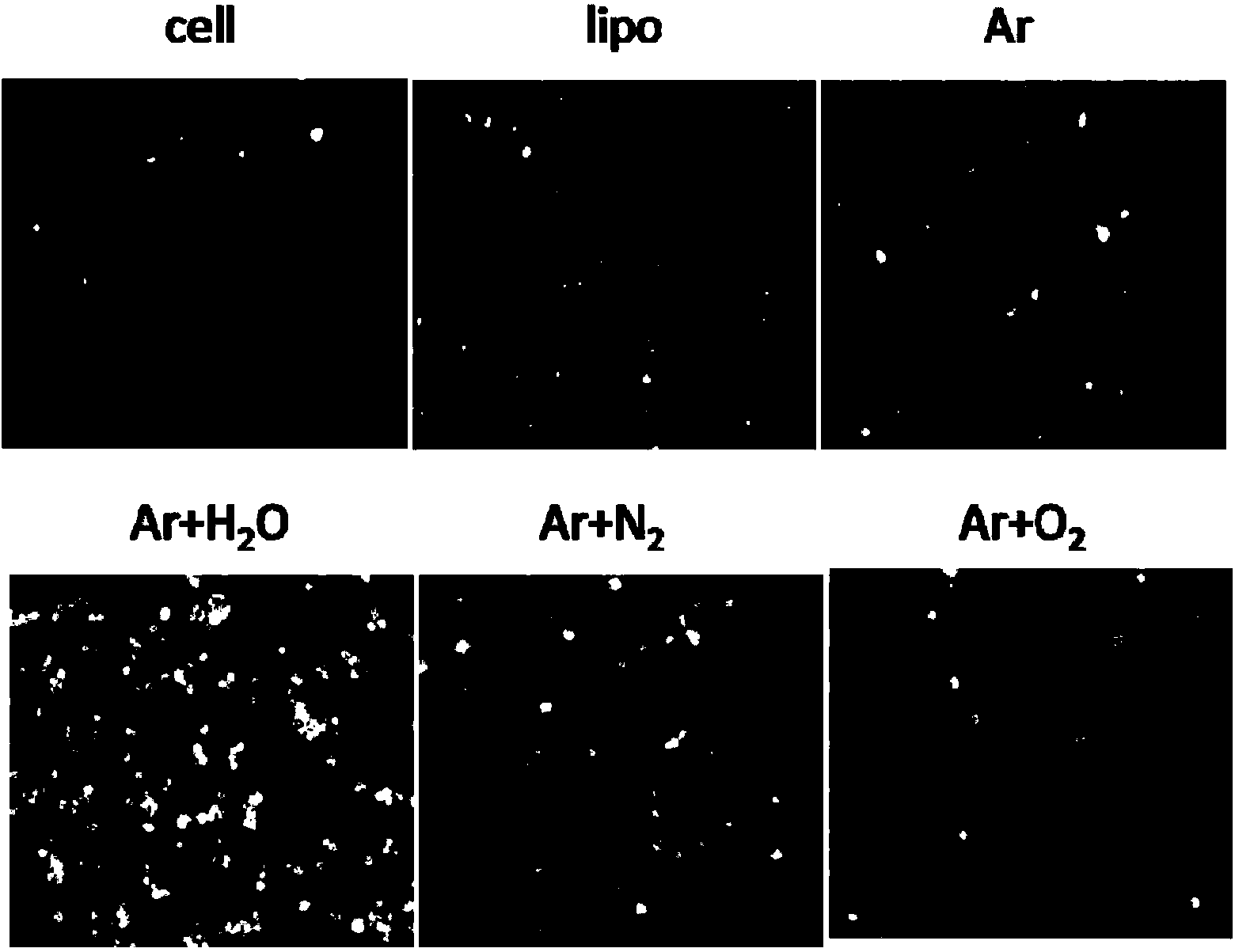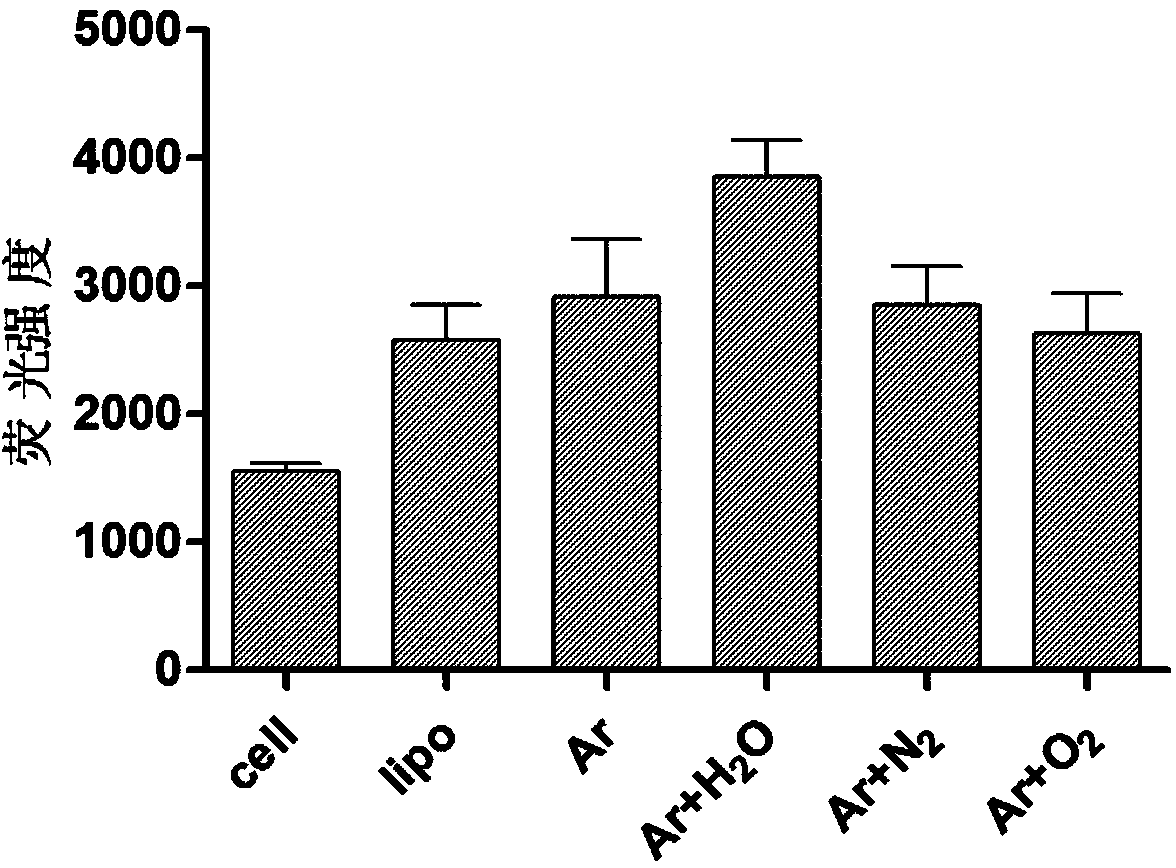Method for transfecting exogenous nucleic acid by use of atmospheric pressure cold plasma jet
A cold plasma, exogenous nucleic acid technology, applied in other methods of inserting foreign genetic materials, recombinant DNA technology, etc., can solve the problems of low transfection efficiency, high cell death rate, and unstable transfection, and achieve convenient The effect of transfection, short transfection time and convenient operation
- Summary
- Abstract
- Description
- Claims
- Application Information
AI Technical Summary
Problems solved by technology
Method used
Image
Examples
Embodiment 1
[0031] After the myeloma cells LP cells were changed the day before, the cells were counted and planted in a 24-well plate at a density of 5×10 5 For each well, the culture medium was RPMI1640, and 300uL of culture medium was added to each well as cells to be transfected.
[0032] Set up the plasma jet source, connect the positive and negative electrodes, and connect the gas flow meter. The bottom of the quartz tube is 1.5cm away from the cell liquid surface. Turn on the Ar gas, select the gas flow rate as 2SLM, and wait for the gas flow to stabilize. Turn on the oscilloscope and high voltage power supply. Adjust the power supply frequency to 10kHz, slowly turn the high voltage knob, observe the power supply voltage display on the oscilloscope, stop the knob until the voltage stabilizes at 10kv, and fix the voltage. At this time, a blue-purple plasma flow will blow out from the bottom of the quartz tube.
[0033] After waiting for one minute for the plasma to stabilize, you ...
Embodiment 2
[0035] Other operations of this embodiment are the same as those in Embodiment 1, the difference is that other auxiliary gases can also be added when the basic gas is introduced, and when the Ar gas is open, oxygen, nitrogen or water vapor and other gases can be added as Auxiliary gas, adjust the respective auxiliary gas flow rate 20sslm.
[0036] Leave it for 1 minute until the gas is fully mixed and stabilized, turn on the high voltage power supply to 10kv in the original way, wait for 1 minute and then the plasma jet is stable, place the cells to be transfected under the jet source, and after 20-60 seconds, add After the exogenous nucleic acid is transfected, mix it gently and put it into the incubator to continue culturing to complete the transfection process.
[0037] Specific experimental verification:
[0038] 1. Detection of transfection effect by fluorescence microscope
[0039] After the LP cells were changed the day before, the cells were counted and planted in a ...
PUM
 Login to View More
Login to View More Abstract
Description
Claims
Application Information
 Login to View More
Login to View More - R&D
- Intellectual Property
- Life Sciences
- Materials
- Tech Scout
- Unparalleled Data Quality
- Higher Quality Content
- 60% Fewer Hallucinations
Browse by: Latest US Patents, China's latest patents, Technical Efficacy Thesaurus, Application Domain, Technology Topic, Popular Technical Reports.
© 2025 PatSnap. All rights reserved.Legal|Privacy policy|Modern Slavery Act Transparency Statement|Sitemap|About US| Contact US: help@patsnap.com



